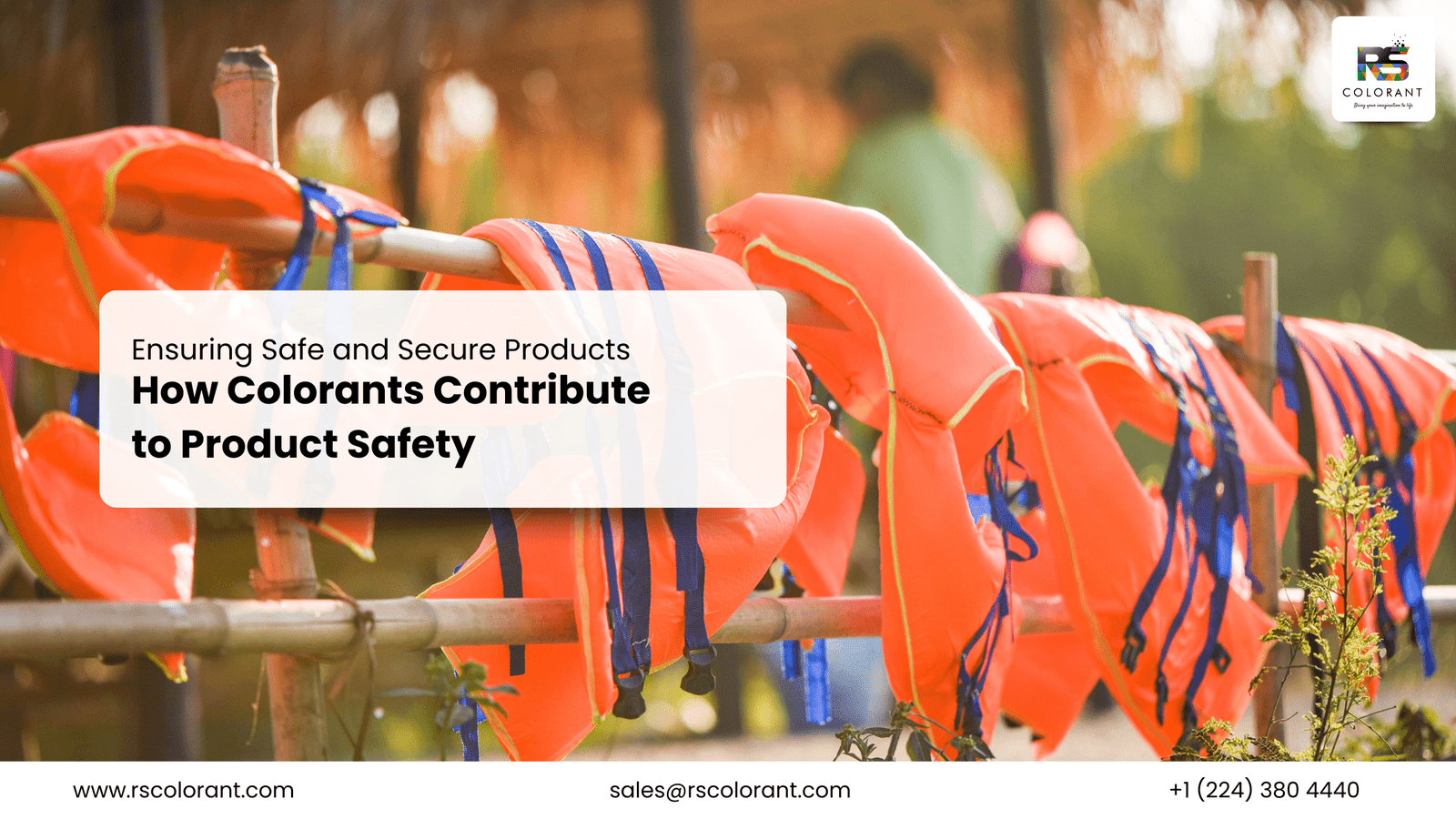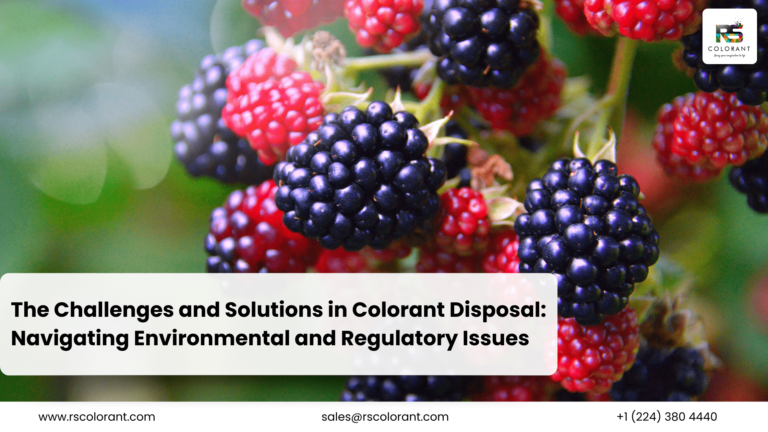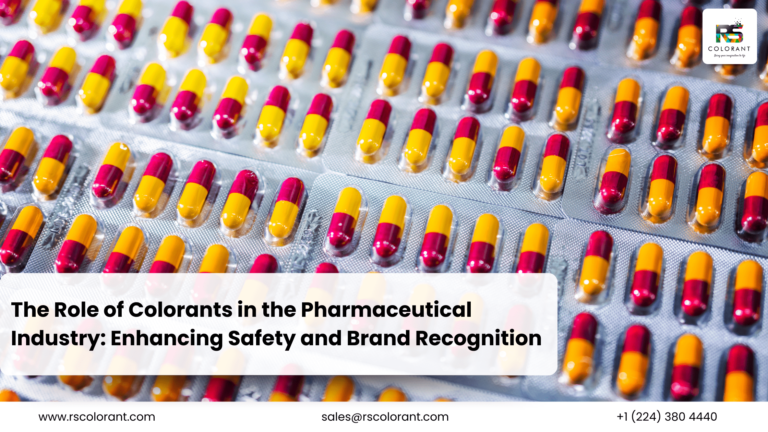Colorants Contribute to Product Safety – Outline
- Introduction
- The Importance of Colorants in Everyday Products
- Brief Overview of Product Safety
- Understanding Colorants
- Definition and Types of Colorants
- Natural vs. Synthetic Colorants
- Role of Colorants in Product Identification
- Enhancing Product Appeal
- Preventing Counterfeiting
- Colorants and Regulatory Standards
- Importance of Regulations
- Key Regulatory Bodies
- Safety Assessment of Colorants
- Toxicological Testing
- Risk Assessment Procedures
- Colorants in Food Products
- Ensuring Food Safety
- Commonly Used Food Colorants
- Colorants in Pharmaceuticals
- Enhancing Medication Safety
- Regulatory Requirements for Pharmaceutical Colorants
- Colorants in Cosmetics
- Safety in Beauty Products
- Popular Cosmetic Colorants
- Environmental Impact of Colorants
- Eco-Friendly Colorants
- Managing Environmental Risks
- Innovations in Colorant Technology
- Advancements in Safe Colorants
- Sustainable Alternatives
- Consumer Awareness and Education
- Importance of Label Reading
- Understanding Colorant Information
- Case Studies on Colorant Safety
- Successful Implementation in Various Industries
- Lessons Learned
- Challenges and Future Directions
- Current Challenges in Colorant Safety
- Future Trends in Colorant Use
- Conclusion
- Recap of Colorants’ Contribution to Safety
- Final Thoughts
- FAQs
- What are the main types of colorants used in products?
- How do regulations ensure the safety of colorants?
- Are natural colorants always safer than synthetic ones?
- How can consumers be sure about the safety of colorants in products?
- What are the future trends in the development of safe colorants?
How Colorants Contribute to Product Safety
Introduction
Colorants are everywhere. From the vibrant hues of our favorite foods to the striking shades in cosmetics and the distinct colors in pharmaceuticals, they play a crucial role in our daily lives. But beyond their aesthetic appeal, colorants significantly contribute to product safety. So, how do these tiny particles ensure that the products we use are safe? Let’s dive in and find out.
Understanding Colorants
Definition and Types of Colorants
Colorants are substances used to impart color to various products. They come in two main types: dyes, which are soluble in water, and pigments, which are insoluble. Both types are used across different industries to enhance the appearance and functionality of products.
Natural vs. Synthetic Colorants
Natural colorants are derived from plants, minerals, and animals, whereas synthetic colorants are created through chemical processes. Each type has its advantages and disadvantages in terms of safety, stability, and application.
Role of Colorants in Product Identification
Enhancing Product Appeal
Colorants make products visually appealing, which is crucial for consumer attraction. The right color can make a product more desirable and distinguishable from others on the shelf.
Preventing Counterfeiting
Unique color combinations and formulations can help prevent counterfeiting. By using specific colorants, manufacturers can create distinct products that are harder to replicate illegally.
Colorants and Regulatory Standards
Importance of Regulations
Regulations ensure that colorants used in products are safe for consumers. These regulations are put in place to protect public health and prevent harmful substances from being used.
Key Regulatory Bodies
Key regulatory bodies include the Food and Drug Administration (FDA) in the United States, the European Food Safety Authority (EFSA), and other national health and safety organizations. These bodies establish guidelines and conduct rigorous testing to ensure colorant safety.
Safety Assessment of Colorants
Toxicological Testing
Toxicological testing is essential to determine if a colorant is safe for use. This involves assessing the potential for toxicity, carcinogenicity, and other health risks.
Risk Assessment Procedures
Risk assessment procedures evaluate the likelihood of adverse effects occurring under specific conditions of use. This ensures that colorants are safe when used within established limits.
Colorants in Food Products
Ensuring Food Safety
Food colorants must meet strict safety standards to ensure they are safe for consumption. This includes testing for potential health risks and ensuring they do not alter the nutritional value of the food.
Commonly Used Food Colorants
Some commonly used food colorants include carotenoids, anthocyanins, and synthetic dyes like Allura Red and Tartrazine. Each has been tested extensively to ensure its safety.
Colorants in Pharmaceuticals
Enhancing Medication Safety
In pharmaceuticals, colorants are used to differentiate medications, making it easier for patients and healthcare providers to identify them correctly. This reduces the risk of medication errors.
Regulatory Requirements for Pharmaceutical Colorants
Pharmaceutical colorants must comply with regulations set by bodies like the FDA and the European Medicines Agency (EMA). These regulations ensure that the colorants do not interfere with the efficacy or safety of the medication.
Colorants in Cosmetics
Safety in Beauty Products
Cosmetic colorants are regulated to ensure they are safe for skin contact. This includes testing for allergens, irritants, and other potential risks.
Popular Cosmetic Colorants
Popular cosmetic colorants include iron oxides, titanium dioxide, and natural colorants like beetroot extract. These colorants are chosen for their safety and effectiveness in creating desirable shades.
Environmental Impact of Colorants
Eco-Friendly Colorants
Eco-friendly colorants are designed to reduce environmental impact. These include natural dyes and pigments that are biodegradable and sourced sustainably.
Managing Environmental Risks
Managing the environmental risks of colorants involves ensuring that manufacturing processes minimize pollution and that waste products are disposed of responsibly.
Innovations in Colorant Technology
Advancements in Safe Colorants
Recent advancements in colorant technology focus on developing safer, more stable colorants. This includes new synthetic methods and the use of nanotechnology to create colorants with improved safety profiles.
Sustainable Alternatives
Sustainable alternatives to traditional colorants include those made from renewable resources and those that require less energy and water to produce. These innovations help reduce the overall environmental footprint of colorant production.
Consumer Awareness and Education
Importance of Label Reading
Consumers should be aware of the colorants used in products they purchase. Reading labels and understanding ingredient lists can help consumers make informed choices about the safety of the products they use.
Understanding Colorant Information
Understanding the information provided about colorants, such as their source and safety testing, can help consumers feel more confident about their purchases.
Case Studies on Colorant Safety
Successful Implementation in Various Industries
Several industries have successfully implemented safe colorant practices. For example, the food industry has reduced the use of artificial dyes, and the cosmetics industry has shifted towards natural colorants.
Lessons Learned
Lessons learned from these implementations include the importance of continuous research and adaptation to new safety standards and consumer preferences.
Challenges and Future Directions
Current Challenges in Colorant Safety
Current challenges in colorant safety include ensuring the safety of new synthetic colorants and managing the environmental impact of colorant production.
Future Trends in Colorant Use
Future trends in colorant use include the development of even safer and more sustainable colorants. This includes ongoing research into natural alternatives and innovative synthetic methods.
Conclusion
Colorants are more than just visual enhancers; they play a crucial role in ensuring product safety across various industries. By adhering to strict regulatory standards and continuous innovation, the safety of colorants can be maintained and improved. Understanding the importance of colorants in product safety helps consumers make informed choices and trust the products they use daily.
FAQs
What are the main types of colorants used in products? The main types of colorants are dyes, which are water-soluble, and pigments, which are insoluble. Both are used to impart color to various products.
How do regulations ensure the safety of colorants? Regulatory bodies like the FDA and EFSA establish guidelines and conduct rigorous testing to ensure that colorants are safe for consumer use.
Are natural colorants always safer than synthetic ones? Not necessarily. While natural colorants are often perceived as safer, synthetic colorants can be precisely engineered to be stable and safe. Both types require thorough testing.
How can consumers be sure about the safety of colorants in products? Consumers can ensure the safety of colorants by reading product labels, understanding ingredient lists, and choosing products from reputable brands that adhere to regulatory standards.
What are the future trends in the development of safe colorants? Future trends include the development of safer synthetic methods, the use of nanotechnology, and the creation of sustainable, eco-friendly colorants.




